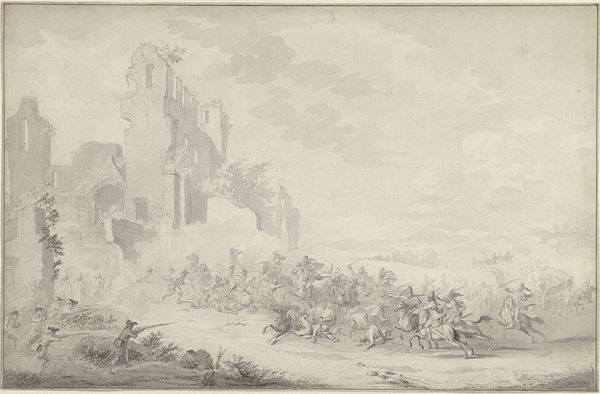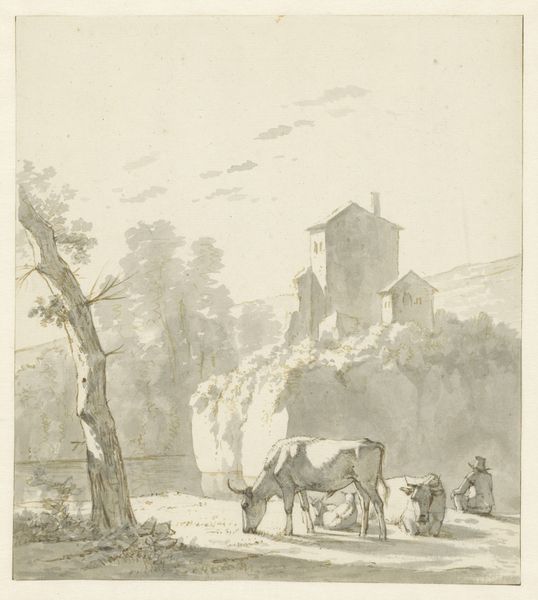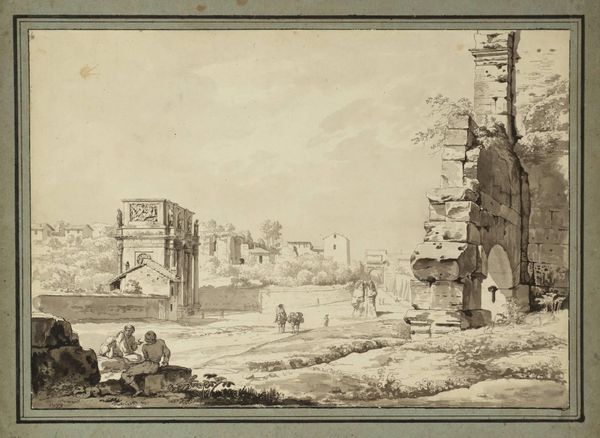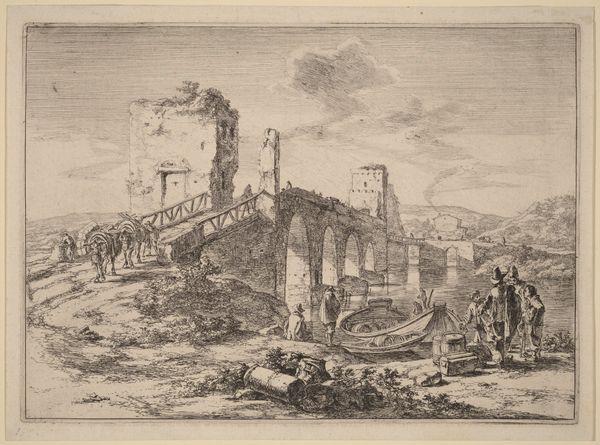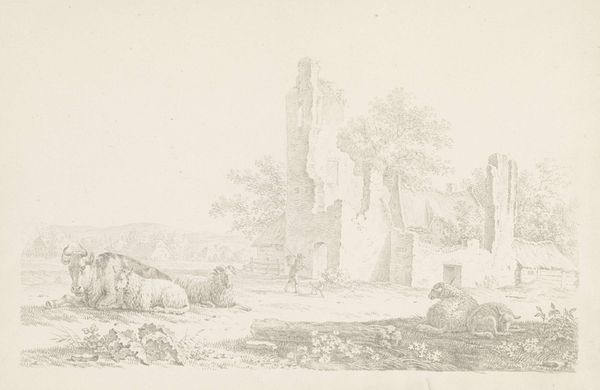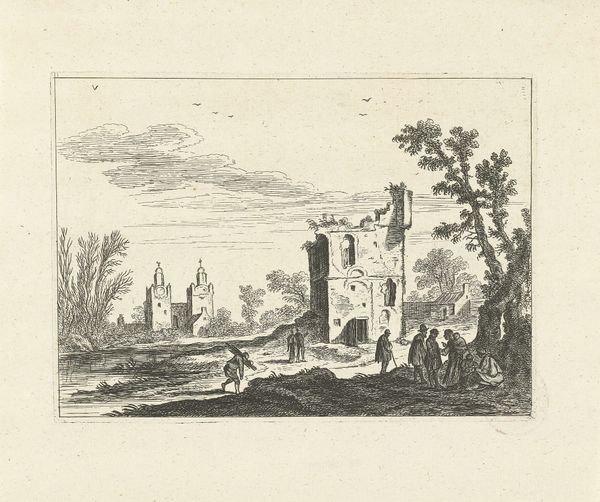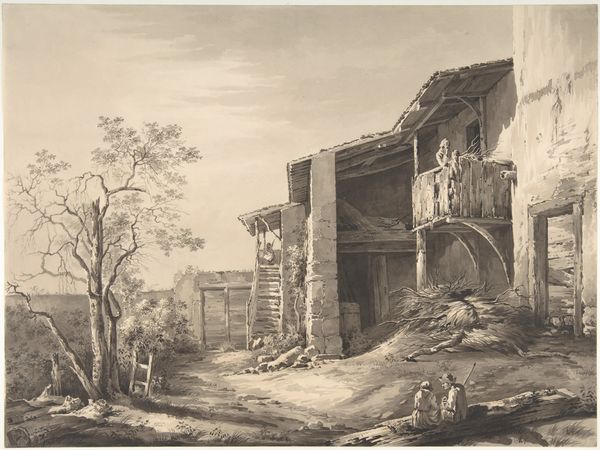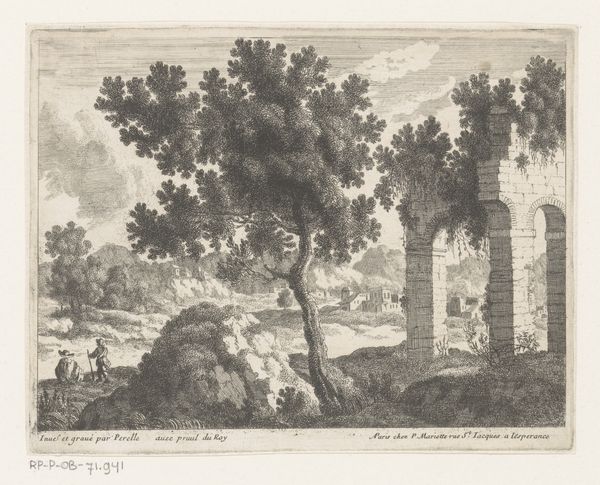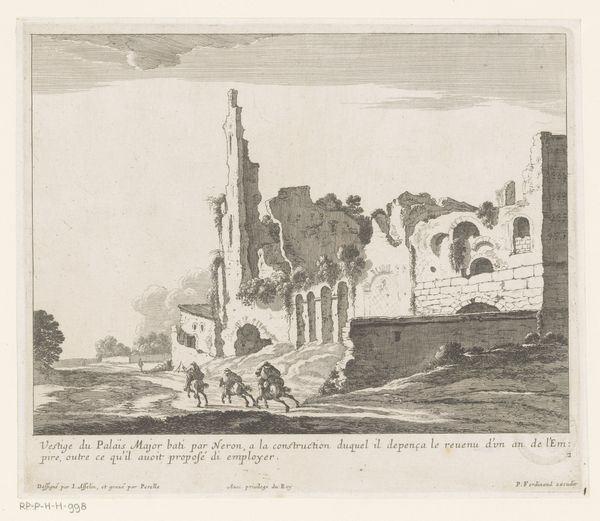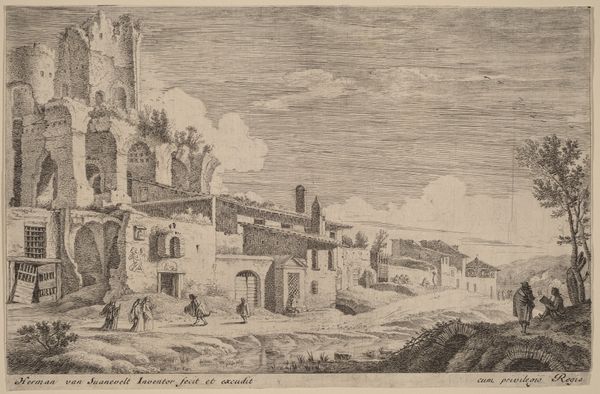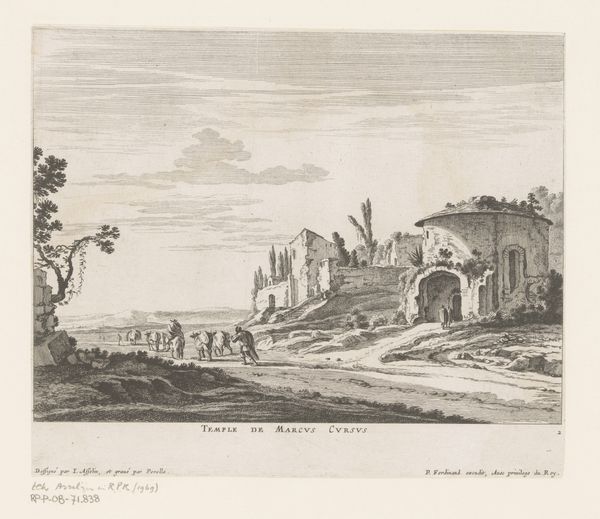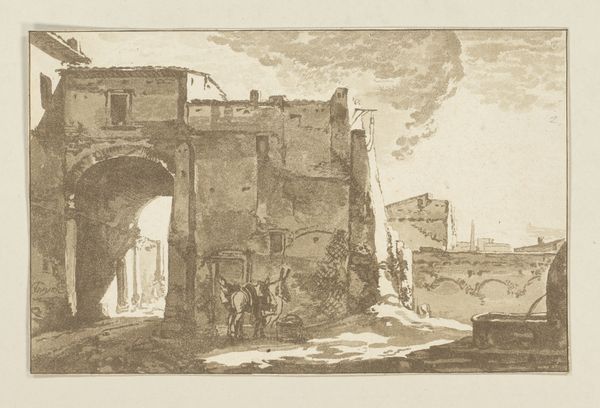
drawing, paper, ink
#
drawing
#
landscape
#
paper
#
ink
#
romanticism
#
horse
#
pen work
#
realism
Dimensions: height 208 mm, width 268 mm
Copyright: Rijks Museum: Open Domain
Curator: This is "Landscape with Cattle and Ruins," a drawing made with ink on paper by Jan van Ravenswaay in 1823. What are your first impressions? Editor: It's serene, but also melancholy. The ruined tower looming in the background casts a shadow, even with the peaceful scene in the foreground. The drawing's monochromatic scheme only accentuates this slightly mournful atmosphere. Curator: The ruins certainly speak to the Romanticism prevalent at the time. What intrigues me, however, is the sheer labor invested in a work on paper. Consider the crafting of ink, the sourcing of the paper itself... Editor: Indeed. But consider also the ruined tower, a potent symbol of the transience of earthly power, echoing similar imagery found across European art. Doesn't this connect the work to larger cultural anxieties and philosophical currents? Curator: Absolutely, although, in examining this composition, one sees the careful arrangement of each element: animal, human, ruin—revealing a social commentary. Note the figures with their livestock against this backdrop of decay—it speaks to agrarian cycles. Editor: It is certainly well constructed. Look closely at how the animals themselves are arranged. The reclining cattle mirroring the broken walls. They seem oblivious, their innocence amplifying the feeling of human history crumbling behind them. Curator: Furthermore, Ravenswaay had to procure paper, which by the early 19th century was produced through industrialized methods but would still imply an economic framework allowing for the commission of drawings. Editor: These pastoral scenes are a consistent visual motif in 19th-century art. Perhaps they reveal nostalgia for a simpler way of life. Curator: Ultimately, "Landscape with Cattle and Ruins" demonstrates how much artistry and labor went into depicting a fleeting moment, an artist participating in a specific visual dialogue in his place and time. Editor: The artwork shows us not just a scene, but the weight of time, captured in symbolic forms and made intimate through relatable imagery. It's a quiet invitation to reflect on our place within the continuum.
Comments
No comments
Be the first to comment and join the conversation on the ultimate creative platform.
